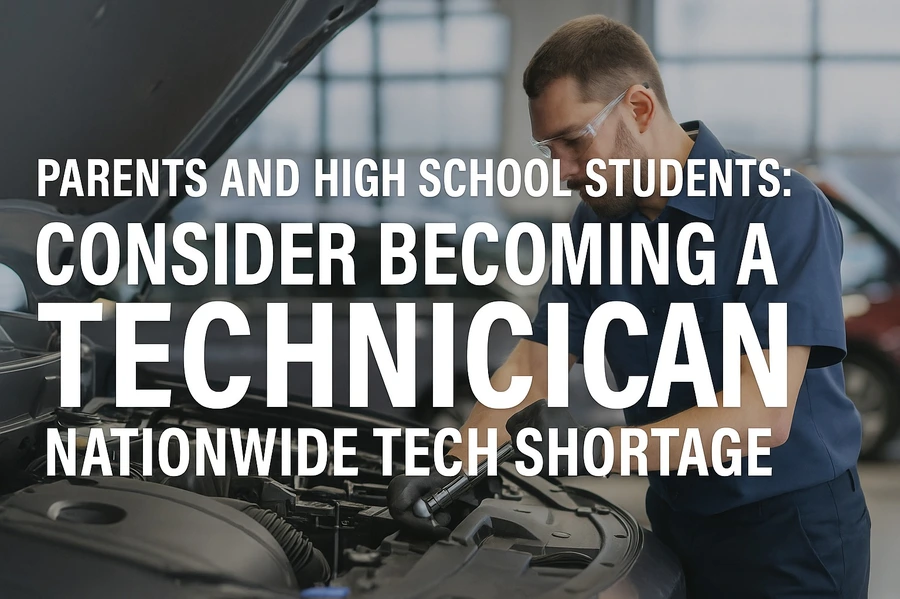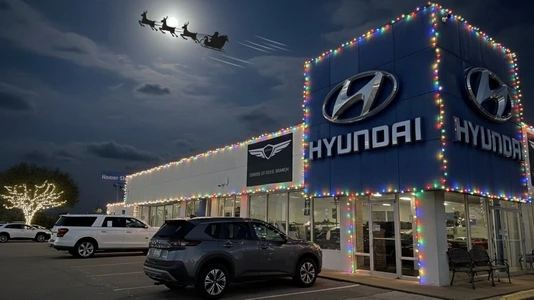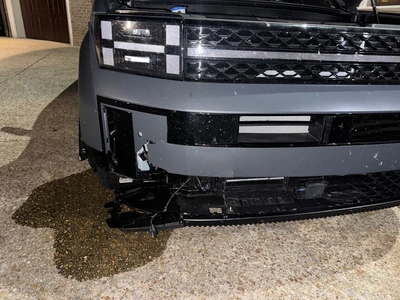The nation urgently needs more technicians
The U.S. is facing a critical shortage of skilled automotive and diesel technicians. Industry analysts estimate that nearly one million new technicians will be needed in just the next five years to replace retirees and support our expanding vehicle fleet. That’s not a distant problem—it’s happening now, and dealerships like ours are racing to fill the gap.
What Top-Efficiency Technicians Can Earn
These numbers reflect high-efficiency flat-rate performance (typically 125–130% of booked time). This is what’s possible for driven technicians. Entry pay starts lower as students learn the craft.
| Career Stage | Certified Flat-Rate Range | High-Efficiency Annual Potential* |
|---|---|---|
| Entry-Level Apprentice | around $20/hr | up to $52,000 |
| Main-Shop Certified Tech | $25 – $35/hr | up to $90,000 |
| Master-Level Specialist | $45+/hr | $115,000 – $125,000+ |
*Based on a 40-hour workweek and flagging 50+ hours. Real earnings depend on performance, volume, bonuses, and experience.
Skip the debt — start earning now
As a parent myself, I understand the pressure to send kids down a "safe" path, often assumed to mean college. But here’s the truth:
-
No four-year degree is required. Most students can enter a paid apprenticeship right out of high school through a local CTE program or a 12–18 month course.
-
No student loan debt. Most techs graduate with little to no loan burden—and start earning immediately.
-
Flat-rate pay rewards performance. Even as apprentices, students are paid for every hour they flag, meaning they’re rewarded as they learn and grow.
The reality? A growing number of students leave college with $30,000–$50,000 in debt, only to struggle finding a job in their field—or to accept one that pays far less than expected. Many are underemployed, living at home, and trying to dig out from debt before they even get started.
Meanwhile, certified technicians are walking into jobs that are waiting on them. The demand is too high, the skills too specialized, and the industry too essential for it to be otherwise.
Just across town at our Ford store in Olive Branch, we have six master technicians, and several of them have been there for over 30 years. That’s the kind of career stability and long-term opportunity most college grads can only hope for.
If you're looking for the safest, most stable path forward—one with high demand, strong earning potential, no debt, and proven longevity—it’s hard to make a better case than becoming a certified dealership technician.
As AI takes jobs, technicians stay in high demand
AI can write code, but it can’t replace a brake rotor or calibrate a sensor. Every smart feature on a vehicle—from radar to adaptive cruise—still relies on skilled human hands to install, verify, and repair. Technicians aren’t being replaced by technology—they’re becoming more critical because of it.
How your student can get started now
-
Enroll in a high school career-tech program or dual-credit automotive course
-
Shadow a dealership technician to see the work in action
-
Apply for industry scholarships that help cover tuition and tool costs
-
Take on a summer or after-school apprenticeship to earn while gaining experience
An open invitation from me personally
At Homer Skelton Hyundai, we’re always looking for the next generation of skilled technicians. We hire and develop entry-level talent year-round, and we actively sponsor students through Hyundai’s official certification programs—covering ASE test fees, advanced EV training, and more.
If you’re a parent wondering what comes after graduation for your son or daughter, I invite you to look at this path seriously. There’s real opportunity here—right now, in our community.
Have questions or want to tour the shop with your student? Reach out to me directly at brennon@homerskeltonhq.com, or stop by the dealership after school. I’d be glad to show you around and talk more about what this career could mean for your family’s future.
Your student doesn’t have to start out in debt to build a successful, respected, and well-paying career. Sometimes the smartest move isn’t the most traditional one—it’s the one that leads to real growth.
Sincerely,
Brennon Chapman
General Manager, Homer Skelton Hyundai









